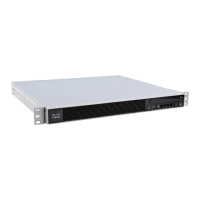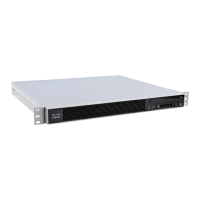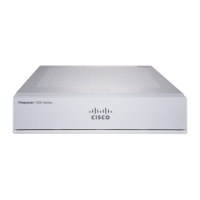1-100
Cisco ASA Series CLI Configuration Guide
Chapter 1 Configuring Connection Profiles, Group Policies, and Users
Configuring User Attributes
To enable or disable ActiveX controls on Clientless SSL VPN sessions, enter the following command in
username webvpn configuration mode:
activex-relay {enable | disable}
To inherit the activex-relay command from the group policy, enter the following command:
no activex-relay
The following commands enable ActiveX controls on Clientless SSL VPN sessions associated with a
given username:
hostname(config-username-policy)# webvpn
hostname(config-username-webvpn)# activex-relay enable
hostname(config-username-webvpn)
Enabling Application Access for Clientless SSL VPN Sessions
To enable application access for this user, enter the port-forward command in username webvpn
configuration mode. Port forwarding is disabled by default.
To remove the port forwarding attribute from the configuration, including a null value created by issuing
the port-forward none command, enter the no form of this command. The no option allows inheritance
of a list from the group policy. To disallow filtering and prevent inheriting a port forwarding list, enter
the port-forward command with the none keyword.
hostname(config-username-webvpn)# port-forward {value listname | none}
hostname(config-username-webvpn)# no port-forward
hostname(config-username-webvpn)#
The listname string following the keyword value identifies the list of applications users of clientless SSL
VPN can access. Enter the port-forward command in configuration mode to define the list.
Using the command a second time overrides the previous setting.
Before you can enter the port-forward command in username webvpn configuration mode to enable
application access, you must define a list of applications that you want users to be able to use in a
clientless SSL VPN session. Enter the port-forward command in global configuration mode to define
this list.
The following example shows how to configure a portforwarding list called ports1:
hostname(config-group-policy)# webvpn
hostname(config-username-webvpn)# port-forward value ports1
hostname(config-username-webvpn)#
Configuring the Port-Forwarding Display Name
Configure the display name that identifies TCP port forwarding to end users for a particular user by using
the port-forward-name command in username webvpn configuration mode. To delete the display name,
including a null value created by using the port-forward-name none command, enter the no form of
the command. The no option restores the default name, Application Access. To prevent a display name,
enter the port-forward none command.
hostname(config-username-webvpn)# port-forward-name {value name | none}
hostname(config-username-webvpn)# no port-forward-name
The following example shows how to configure the port-forward name test:
hostname(config-group-policy)# webvpn
hostname(config-username-webvpn)# port-forward-name value test
hostname(config-username-webvpn)#

